Challenge studies
A variety of studies have been done to prove Nobilis® Salenvac® ETC’s efficacy against different Salmonella infections in poultry.
Reduction of shedding
Shedding of Salmonella Enteritidis, Salmonella Typhimurium and Salmonella Infantis was evaluated inbirds that received Salenvac ETC vaccinations at the ages of 6 and 10 weeks, and a control group thatwas non-vaccinated. The groups were then challenged at week 14.
The graphs below show the birds vaccinated with Salenvac ETC shed lower S. Enteritidis, S. Typhimuriumand S. Infantis bacteria counts when compared to the control group over the length of the study.
Salenvac ETC Efficacy
Vs. S. Enteritidis Challenge
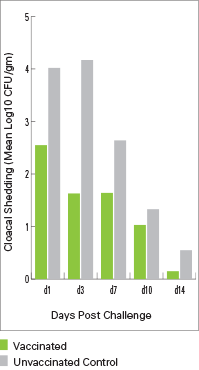
Salenvac ETC Efficacy
Vs. S. Typhimurium Challenge
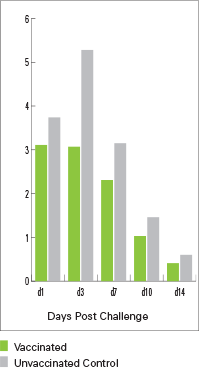
Salenvac ETC Efficacy
Vs. S. Infantis Challenge
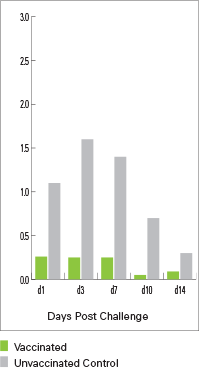
Conclusion
Nobilis Salenvac ETC reduces the shedding of Salmonella Enteritidis, Salmonella Typhimurium and Salmonella Infantis when compared to the control group over the length of the study.
Extended duration of immunity
Salenvac ETC has a long, 90-week duration of immunity (DOI) post second vaccination (as evidenced by sustained serology) against both S. Enteritidis and S. Typhimurium.
The vaccinated birds showed a good response to all three antigens contained within the vaccine. The antibody levels were higher than the non-vaccinated birds throughout the length of the study.
Salenvac ETC Duration of Immunity Vs. S. Enteritidis
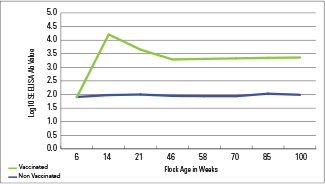
Salenvac ETC Duration of Immunity Vs. S. Typhimurium
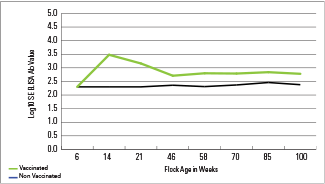
Conclusion
- Chickens vaccinated with Salenvac ETC have protection against S. Enteritidis and S. Typhimurium for up to 90 weeks.
- Birds vaccinated with Salenvac ETC also showed a DOI of 51 weeks against Group C species, S. Infantis and S. Hadar, as evidenced by challenge testing. In addition, birds vaccinated with Salenvac ETC showed a DOI of 57 weeks and 51 weeks respectively against S. Heidelberg and S. Virchow based on scientific knowledge from internal trials.
